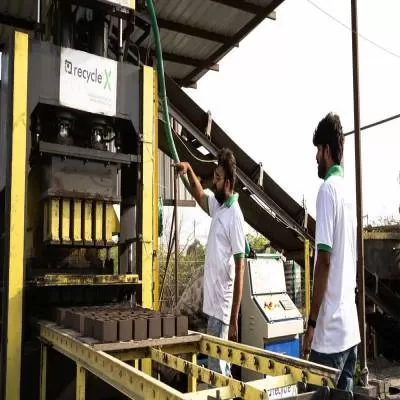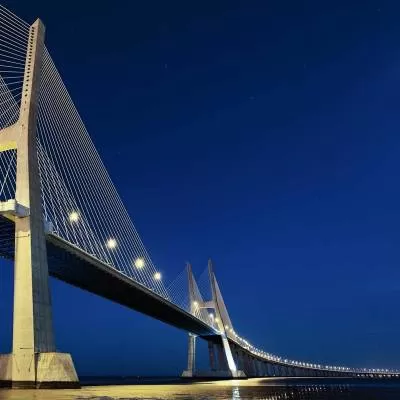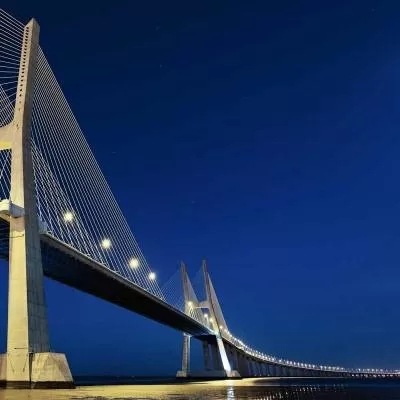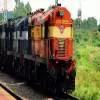- Home
- Infrastructure Transport
- ROADS & HIGHWAYS
- Bridging the Future
Bridging the Future
With rising infrastructure and environmental considerations, precast segmental concrete design and construction is becoming the preferred bridging solution.
Externally post-tensioned segmental box girder bridges are one of the major new developments in bridge engineering in recent years. In contrast to the conventional monolithic construction, a segmental bridge comprises small precast elements stressed together by tendons. The main advantages of such structures are fast and versatile construction, no disruption at ground level, highly controlled quality and cost saving, which makes them the preferred solution for many long, elevated highways and bridges.
While the continuing growth in market share for precast, pre-stressed concrete systems can be attributed to numerous competitive advantages, the five main advantages of precast concrete segmental construction are economy, construction efficiency, durability, design innovation and aesthetics.
Precast segmental concrete design and construction have successfully been used for all types of bridges in various environments. The John T Collinson Bridge in Pensacola, Florida, was the first precast concrete segmental bridge used for heavy rail in the United States. Precast segmental bridge options provided the designer with the ability to meet or exceed the needs of the owner.
The precast solution
Bridges, by nature, have significant design and construction challenges that are resolved by precast segmental construction. Speed of production increases considerably both in casting of the segments and erection along with the increased ability to construct in a congested environment. With production typically occurring off-site in a controlled environment, the quality of the precast bridge can be assured with regard to color consistency, meeting or exceeding strength requirements and achieving a bridge that requires little or no maintenance. This construction method is also an advantage in protecting sensitive environments from disruption during construction.
One of the main concerns in building such bridges is the creep/shrinkage. Creep/shrinkage is the property of concrete to change in volume independently of the loads it sustains. Both creep and shrinkage are time-dependent deformations and may occur concurrently. The effect of creep and shrinkage on segmental precast and cast-in-place bridges has been a matter of constant debate. Many design engineers, however, are still unsure of the effect of these on the final stresses of a structure.
Challenges within a given environment
1. Over traffic
Mass transit is a major part of many urban environments, and building bridges within existing vehicular traffic is always a challenge. With the continued acceleration of suburban development, major traffic corridors in most metropolitan areas are exceeding their capacity, and cities now require mass transit facilities that can be constructed with minimal disruption to existing traffic. Precast segmental construction has been proven in numerous applications to satisfy the requirement of maintaining traffic during construction.
2. On environmentally sensitive sites
Construction occurring over environmentally sensitive waters or wetlands requires specific attention to the erection methods. The structure, from the top of the completed bridge deck, allows construction to continue without disrupting sensitive areas. In this type of environment, precast segmental construction is particularly suited because majority of the concrete operations occur off-site. The precast segments can be delivered across the completed bridge deck and erected into place.
Example: San Antonio’s ‘Y’ project in Texas.
3. Over water
When a bridge structure is being built over water, efficiency is achieved through the simplification of operation. Precast segmental construction allows off-site casting that removes complicated casting procedures and unpredictable weather from the critical path. Once the segments are cast, they can easily be barged to the erection site, lifted onto the erection truss using a barge-mounted crane and assembled.
Example: John T Collinson Bridge in Florida.
In conclusion
Precast segmental construction brings significant and quantifiable benefits to owners. These include:
- Minimising impacts on the environment within an existing corridor.
- Accelerating project completion by minimising time required for acquisition and new environmental studies.
- Reducing impact on environmentally sensitive waters and wetlands by structure from above.
- Increasing quality by precasting structural elements off site in factory-like conditions.
- Reducing construction time with concurrent substructure and superstructure casting.
- Improving aesthetics with slender columns and closed box girder shape.
The future of bridge construction will include even more heavily congested urban sites, similar environmentally sensitive areas and the same need for low-maintenance and long-lasting bridges, and precast segmental construction will be the optimal solution for many bridge projects in both urban and rural environments.
(Communication by the management of the company)
With rising infrastructure and environmental considerations, precast segmental concrete design and construction is becoming the preferred bridging solution. Externally post-tensioned segmental box girder bridges are one of the major new developments in bridge engineering in recent years. In contrast to the conventional monolithic construction, a segmental bridge comprises small precast elements stressed together by tendons. The main advantages of such structures are fast and versatile construction, no disruption at ground level, highly controlled quality and cost saving, which makes them the preferred solution for many long, elevated highways and bridges. While the continuing growth in market share for precast, pre-stressed concrete systems can be attributed to numerous competitive advantages, the five main advantages of precast concrete segmental construction are economy, construction efficiency, durability, design innovation and aesthetics. Precast segmental concrete design and construction have successfully been used for all types of bridges in various environments. The John T Collinson Bridge in Pensacola, Florida, was the first precast concrete segmental bridge used for heavy rail in the United States. Precast segmental bridge options provided the designer with the ability to meet or exceed the needs of the owner. The precast solution Bridges, by nature, have significant design and construction challenges that are resolved by precast segmental construction. Speed of production increases considerably both in casting of the segments and erection along with the increased ability to construct in a congested environment. With production typically occurring off-site in a controlled environment, the quality of the precast bridge can be assured with regard to color consistency, meeting or exceeding strength requirements and achieving a bridge that requires little or no maintenance. This construction method is also an advantage in protecting sensitive environments from disruption during construction. One of the main concerns in building such bridges is the creep/shrinkage. Creep/shrinkage is the property of concrete to change in volume independently of the loads it sustains. Both creep and shrinkage are time-dependent deformations and may occur concurrently. The effect of creep and shrinkage on segmental precast and cast-in-place bridges has been a matter of constant debate. Many design engineers, however, are still unsure of the effect of these on the final stresses of a structure. Challenges within a given environment 1. Over traffic Mass transit is a major part of many urban environments, and building bridges within existing vehicular traffic is always a challenge. With the continued acceleration of suburban development, major traffic corridors in most metropolitan areas are exceeding their capacity, and cities now require mass transit facilities that can be constructed with minimal disruption to existing traffic. Precast segmental construction has been proven in numerous applications to satisfy the requirement of maintaining traffic during construction. 2. On environmentally sensitive sites Construction occurring over environmentally sensitive waters or wetlands requires specific attention to the erection methods. The structure, from the top of the completed bridge deck, allows construction to continue without disrupting sensitive areas. In this type of environment, precast segmental construction is particularly suited because majority of the concrete operations occur off-site. The precast segments can be delivered across the completed bridge deck and erected into place.Example: San Antonio’s ‘Y’ project in Texas. 3. Over water When a bridge structure is being built over water, efficiency is achieved through the simplification of operation. Precast segmental construction allows off-site casting that removes complicated casting procedures and unpredictable weather from the critical path. Once the segments are cast, they can easily be barged to the erection site, lifted onto the erection truss using a barge-mounted crane and assembled.Example: John T Collinson Bridge in Florida. In conclusion Precast segmental construction brings significant and quantifiable benefits to owners. These include: Minimising impacts on the environment within an existing corridor. Accelerating project completion by minimising time required for acquisition and new environmental studies. Reducing impact on environmentally sensitive waters and wetlands by structure from above. Increasing quality by precasting structural elements off site in factory-like conditions. Reducing construction time with concurrent substructure and superstructure casting. Improving aesthetics with slender columns and closed box girder shape. The future of bridge construction will include even more heavily congested urban sites, similar environmentally sensitive areas and the same need for low-maintenance and long-lasting bridges, and precast segmental construction will be the optimal solution for many bridge projects in both urban and rural environments. (Communication by the management of the company)






















